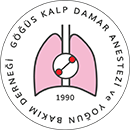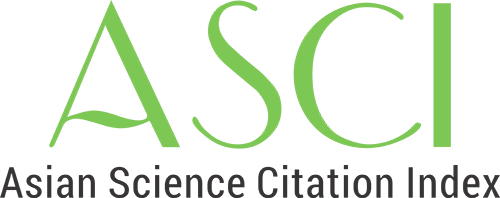

Volume: 28 Issue: 3 - 2022
| OTHER | |
| 1. | Frontmatters Pages I - XII (293 accesses) |
| REVIEW | |
| 2. | Rational Use of COVID-19 Virological Tests in Intensive Care Unit Lerzan Doğan, Ali Ağaçfidan doi: 10.14744/GKDAD.2022.94557 Pages 201 - 205 (400 accesses) The ongoing COVID-19 pandemic reminded once again that microbiological diagnostic methods are irreplaceable in both diagnosing and detecting asymptomatic persons. At present, real-time reverse transcriptase polymerase chain reaction (RT-PCR) is the gold standard method for diagnosing COVID-19, but the tests accuracy varies in sample quality. Especially in the last stages of the disease, negative results of nasopharyngeal or oropharyngeal swab samples or rapid antigen tests do not necessarily mean that these patients do not carry the virus. Considering that a significant number of COVID-19 patients need intensive care and mechanical ventilation in the late period, which sample should be taken from where and when should be evaluated. Lower respiratory tract samples have a more significant chance of finding viral RNA than upper respiratory tract samples. Technical recommendations and the virological diagnostic methodologies and used in the intensive care unit of patients infected with SARS-CoV-2 are summarized in this article. We aimed to emphasize the need to get a sample from the right place at the right time for a reliable virological diagnosis. |
| RESEARCH ARTICLE | |
| 3. | Interstitial Edema After Cardiopulmonary Bypass in Patients Undergone Cardiac Surgery Patients: Evaluation Through Lung Ultrasonography Arife Şengel, Tülün Öztürk, Dilşad Amanvermez Senarslan, Funda Yıldırım doi: 10.14744/GKDAD.2022.17894 Pages 206 - 213 (458 accesses) Objectives: Primary target of the study was identifying pulmonary interstitial edema (IE) with lung ultrasonography after open-heart surgery and searching the reasons of edema. Methods: At the end of the surgery, patients divided in two groups: Group Control: No IE and lung ultrasound (LUS) Score <17. Group IE: IE, LUS score ≥17. All clinical, hemodynamic data, and LUS score were recorded at the beginning (t0), at the end of surgery (t1), at post-operative 4th h (t2), 24th (t3), and 48th h (t4). Results: The mean LUS score of Group IE (n=32, 58%) was 20.8±4.3 and those of patients in Group C mean LUS skore (t1) of 16.2±3.7 (n=23, %42) points at the end of the surgery (t1). In Group IE, serum lactate level was higher than control group (respectively, 2.0±0.8, 1.6±0.8, p=0.04, p<0.02). There was statistically significant positive correlation between LUS scores at the postoperatively 4th h (t2) and central venous pressure (CVP) at the beginning (t0) (r=0.27 p=0.04). There was significantly positive correlation between LUS scores (t2) at the postoperatively 4th h and duration of stay in intensive care unit (ICU) (r=0.35 p<0.01). There was negative correlation between CVP at the beginning (t0) and the pump balance during cardiopulmonary by-pass (r=0.29 p=0.03). Conclusion: The values of CVP, post-operative serum lactate levels, and the length of stay in ICU are found higher in patients with pulmonary IE. The patients with IE had more negative fluid balance in cardiopulmonary bypass (CPB). The presence of diabetes and renal failure, type of surgery, ejection fraction, duration of cross-clamp and CPB did not associated with pulmonary edema in this study. Evaluation of pulmonary IE by lung US method after open heart surgery is valuable in terms of being able to be applied at the bedside, being non-invasive, and providing information about fluid balance. |
| 4. | The Effect of Cerebral Oxygen (rSO2) Exchange on Post-Operative Cognitive Dysfunction in Patients Undergoing Ascending Aortic Surgery Pınar Yıldırım Özkan, Atakan Erkılınç, Mustafa Emre Gürcü, Nur Ürküt Baz doi: 10.14744/GKDAD.2022.44265 Pages 214 - 221 (452 accesses) Objectives: The aim of the study was to investigate the effect of cerebral oxygen (rSO2) change on post-operative cognitive dysfunction in patients who underwent ascending aortic aneurysm surgery with antigrade cerebral perfusion. Methods: Twenty-nine patients, aged between 18 and 75 years, under-going ascending aortic surgery and at least primary school graduates, were included in the study. All patients underwent continuous cerebral oximetry follow-up with NIRS before induction and throughout the operation. Decreases of 20% or more in rSO2 value in NIRS follow-up were considered significant. Neurocognitive evaluation tests were performed 3 times, 1 day before the operation, and on the 1st and 7th days of the operation. For this purpose, mini mental test, clock drawing test, and visual spatial function test were used. Results: A significant decrease was found between pre-operative rSO2 values and rSO2 values during cardiopulmonary bypass and antigrade cerebral perfusion. However, when this decrease and neurocognitive test results were compared with the Spearman correlation test, no significant correlation was found. Conclusion: Although there was a 30% decrease in rSO2 compared to the initial value in NIRS follow-ups, especially in the cardiopulmonary bypass and antirgrade cerebral perfusion periods, no significant correlation was detected with post-operative cognitive dysfunction tests. These results suggest that NIRS monitoring allows timely and rapid intervention to decreases in rSO2 values (increasing antigrade cerebral perfusion flow), thus it is beneficial in maintaining optimal cerebral blood flow and can be used as an effective neuromonitorization method to prevent the development of post-operative cognitive dysfunction. |
| 5. | Intraoperative Hyperglycemic Stress Response and Oxygen Extraction Ratio in Cardiac Surgery Z. Aslı Demir, Eda Balcı, Hülya Yiğit Özay, Melike Kaya Bahçecitapar doi: 10.14744/GKDAD.2022.04880 Pages 222 - 228 (556 accesses) Objectives: Approximately 30% of patients undergoing cardiac surgery have a history of diabetes mellitus (DM) and approximately 6080% of patients without DM have stress hyperglycemia, and this may be correlated with reduced tissue perfusion during cardiac surgery. We aimed to evaluate the effect of stress hyperglycemia on oxygen extraction ratio (O2ER) in non-diabetic (NoDM) and non-insulin-dependent diabetic patients (NIDDM). Methods: In this observational longitudinal study, cardiac surgery patients were grouped as NoDM and NIDDM. For both groups, blood glucose and lactate levels, and hemodynamic measurements (arterial pressures, heart rate, oxygen delivery and consumption, O2ER, and systemic vascular resistance) were performed at four intraoperative time points. Results: A total of 83 consecutive adult patients were analyzed. In NoDM group, the rate of stress hyperglycemia was 78%. There was significant difference between the groups at the end of operation time point in terms of O2ER. NIDDM patients had 1.22 times higher O2ER values than those with NoDM. Conclusion: Stress-induced hyperglycemic response during cardiac surgery was more severe in NoDM patients than in patients with NIDDM. In terms of the O2ER parameter that reflects tissue oxygenation, NIDDM patients had significantly higher O2ER values than NoDM patients. When taken into account, O2ER reflects the total outcome of small changes on microcirculation, we can highlight the conclusion that NIDDM patients undergoing cardiac surgery have greater tissue oxygen demand/supply imbalance compared to NoDM patients. |
| 6. | Levosimendan Use After Cardiac Surgery: A Single-Center Experience Barış Timur, Zihni Mert Duman doi: 10.14744/GKDAD.2022.79847 Pages 229 - 233 (351 accesses) Objectives: Low cardiac output syndrome (LCOS) after cardiac surgery is associated with high mortality. Levosimendan is beneficial in the treatment of LCOS. The aim of this study is to describe the results of levosimendan in our hospital, considering the discussions in the literature. Methods: This was a retrospective analysis of data from patients receiving levosimendan postoperatively at a tertiary cardiac surgery center between November 2019 and February 2021. In the intensive care unit, each patient was started on levosimendan at a loading dose of 12 mcg/kg/10 min, followed by a maintenance dose of 0.1 mcg/kg/min for 24 h. The dose was halved when hypotension developed. Results: The mean age of the patients in the study was 55.87±12.322 years. Five (33.3%) of them were female. Ten of them had hypertension, eight had diabetes mellitus, two had chronic obstructive pulmonary dis-ease, and two had chronic renal failure. Postoperatively, we had 3 mortalities (20%). Mean duration of hospital stay was 29.4±18.715 days and mean duration of intensive care stay was 11.27±11.985 days. Seven patients had acute kidney injury following the surgery, whereas only two of them needed renal replacement therapy. Conclusion: Levosimendan is an agent that can be successfully used to treat patients with LCOS. It can be used before surgery in patients with higher risk before LCOS is developed. |
| 7. | Effects of Iloprost and Nitroglycerin in Mitral Valve Patients with Pulmonary Hypertension Mustafa Şimşek, Türkan Kudsioğlu doi: 10.14744/GKDAD.2022.72623 Pages 234 - 240 (545 accesses) Objectives: Pulmonary hypertension (PHT) is one of the important fac-tors determining the prognosis in the postoperative period, especially in mitral valve patients. We aimed to compare the two treatments (iloprost and nitroglycerin [NTG]) applied at the exit of cardiopulmonary bypass in mitral valve patients with PHT who will be operated in our center. Methods: Sixty patients with a mean pulmonary artery pressure (PAP) ≥25 mmHg were randomized to receive postoperative IV iloprost (Group: 1, n=30) or IV NTG (Group: 2, n=30). Basal hemodynamic param-eters (heart rate, systolic blood pressure, central venous pressure, PAP, and pulmonary capillary wedge pressure [Pcwp]) were recorded before and after treatment in both groups (T0). After induction of anesthesia; patients in Group-I were started on Iloprost at 1 ng-1 kg-1 min, and NTG at 0.51 µg-1 kg-1 min in patients in Group-II. The same parameters were recorded after cardiopulmonary bypass (T1), postoperative 1st h (T2), postoperative 12th h (T3), and postoperative 24th h (T4). Results: Mean pulmonary arterial pressure, pulmonary arterial systolic, and diastolic pressure and PcwP were compared and no statistically significant difference was found between the groups at the time of T0 measurement (p>0.05). Statistically significantly lower pressures were found in favor of Iloprost at T1, T2, T3, and T4 measurement periods (p<0.05). Conclusion: Iloprost and NTG are two effective agents that can treat postoperative PHT in mitral valve surgery. The fact that iloprost causes more specific and significant vasodilation in the pulmonary vascular area, decreases pulmonary vascular resistance without significantly lowering Systemic vascular resistance, and provides significant improvement in Cardiac output and Cardiac index suggest that iloprost is a more effective agent than NTG. |
| 8. | Effects of Acetyl Salicylic Acid on the Risk of Thrombosis in Patients Undergoing Thoracic Surgery Gül Çakmak, Ayten Saraçoğlu, Onur Ermerak, Esra Şirzai, Tunç Laçin, Mustafa Yüksel, Zuhal Aykaç doi: 10.14744/GKDAD.2022.70894 Pages 241 - 246 (391 accesses) Objectives: Drug withdrawal in the pre-operative period may cause risks such as rebound phenomenon or thrombosis. We aimed to determine the incidence of thrombotic complications that may be associated with the discontinuation of pre-operative aspirin in thoracic surgery. Methods: A comparison of demographics, pre-operative and post-operative hemoglobin levels, the duration of surgery, the length of intensive care unit (ICU) and hospital stay, perioperative transfusion of blood products, and the amount of perioperative bleeding was conducted between the patients who were administered Aspirin during their treatment and whose use of medication was discontinued 5 days before the surgery in the preoperative period and the patients who underwent surgery while aspirin treatment was going on. Results: Of the observed complications, 11 were pulmonary embolism while three were re-exploration, one was gastrointestinal bleeding, and one was upper extremity deep vein thrombosis. The demographics, the duration of surgery, the length of hospital stay, and the use of perioperative blood products did not differ between the groups. The amount of perioperative bleeding and the length of ICU stay were significantly greater in group continued (p<0.005). Conclusion: The discontinuation of aspirin may have a negative effect on patient outcomes in thoracic surgery. |
| 9. | Effect of Brachial Plexus Block on Tissue Oxygenation in Arteriovenous Fistula Surgery: A Randomized Clinical Trial Tuğçe Topçam, Mesure Gül Nihan Özden, Cemal Kocaarslan, Hasan Koçoğlu doi: 10.14744/GKDAD.2022.98216 Pages 247 - 253 (596 accesses) Objectives: Anesthesia methods have changed tissue blood flow. Near-infrared spectroscopy (NIRS) monitoring shows tissue oxygenation and indirectly blood flow. We aimed to investigate the effects of local infiltrative anesthesia and supraclavicular brachial plexus block on tissue oxygenation and fistula patency in arteriovenous fistula operations. Methods: Patients operated for arteriovenous fistula were divided into two groups. Group L (n=30) patients received 5% bupivacaine 15 ml local infiltrative anesthesia, while group B (n=30) patients received 0.5% bupivacaine 20 ml + 2% lidocaine 10 ml around the brachial plexus in the supraclavicular region. NIRS measurements of the patients were evaluated from the thenar region of both hands. Surgeon and patient satisfaction were evaluated with the Likert satisfaction rating scale. Patients were questioned for primary patency 1 month after the operation. Results: NIRS values of the arm with AV fistula were higher compared to values of other arm in group B and values of both arms in group L. Patient and surgeon satisfaction were higher in Group B. Primary fistula patency was similar between groups. Conclusion: In arteriovenous fistula surgery, tissue oxygenation measured by NIRS monitoring was higher in the extremity with brachial plexus block, but it did not have a positive effect on fistula patency evaluated at 1 month. |
| 10. | Acute Vascular Complications Developed on ECMO Support: Single-Center and Retrospective Study Semih Murat Yücel, Özgür Kömürcü doi: 10.14744/GKDAD.2022.24861 Pages 254 - 260 (756 accesses) Objectives: Serious acute vascular complications may occur during ECMO support. In our study, acute vascular complications that developed in patients followed up with ECMO support were evaluated. Methods: Patients older than 18 years of age who received ECMO sup-port were included in this study. Acute vascular complications, risk factors, and results were analyzed by evaluating the data retrospectively. Results: Nineteen patients were included in the study. It was observed that V-A ECMO support was performed in 17 patients and V-V ECMO support was performed in two patients. Acute vascular complications developed in 7 patients (36.8%). A significant correlation was found between the ECMO cannulation type and the development of vascular complications (p=0.032). It was determined that the using of distal perfusion cannula or femoral artery graft to prevent the development of vascular complications did not reduce the development of vascular complications (including digital ischemia). Conclusion: We think that peripheral ECMO cannulation is associated with vascular complications and prospective studies are needed to prevent these complications. |
| 11. | Short-Time Low PEEP Challenge and Mini-Fluid Challenge to Evaluate Fluid Responsiveness in the Operating Room Taner Abdullah, Hürü Ceren Gökduman, İşbara Alp Enişte, Özal Adıyeke, Esra Saka, Funda Gümüş doi: 10.14744/GKDAD.2022.04900 Pages 261 - 268 (549 accesses) Objectives: We aimed to assess the abilities of short-time low positive end-expiratory pressure challenge (SLPC) and mini-fluid challenge (MFC) to predict fluid responsiveness with the uncalibrated arterial waveform analysis device in the operating room. Methods: Stroke volume index (SVI), pulse pressure variation (PPV), and stroke volume variation (SVV) were recorded before SLPC (T1) at the end of the 30 s of SLPC (T2), 3 min after SLPC (T3), 1 min after MFC with the infusion of 100 mL of crystalloid (T4), and 3 min after fluid loading was completed with additional 400 mL of crystalloid (T5). Patients whose SVI increased more than 15% after the fluid loading were defined as responders. Along with PPV and SVV, percentage changes in SVI due to SLPC and MFC were evaluated by the area under the receiver operating characteristics curve (ROCAUC) for predicting fluid responsiveness. Results: Thirty patients completed the study. Fourteen (47%) of them were responders. ROCAUC values of SLPC, MFC, PPV, and SVV were 0.92 (95% CI: 0.760.99), 0.94 (95% CI: 0.790.99), 0,68 (95% CI: 0.490.84), and 0.51 (95% CI: 0.320.70), respectively. ROCAUC values of SLPC and MFC were comparable (p= 0.73), and they were both statistical significantly higher than those of SVV and PPV. The best cutoff values of SVI percent-age change to predict fluid responsiveness were 5.1% and 6.7% for SLPC and MFC, respectively. Conclusion: SVI percentage change during SLPC and after MFC can pre-dict fluid responsiveness better than PPV and SVV in the operating room. |
| 12. | Analysis of Prolonged Hospitalizations in Tertiary Intensive Care Units Hayriye Cankar Dal, Hasan Oktay Emir, Alper Bayar, Abdulaziz Aysel, Hülya Şirin, Çilem Bayındır Dicle, Cihangir Doğu, Sema Turan doi: 10.14744/GKDAD.2022.67984 Pages 269 - 275 (2099 accesses) Objectives: It is aimed to define the characteristics of patients with pro-longed hospitalization in intensive care units (ICU), which has an important place in health expenditures, to determine the treatment modalities applied, and to determine patient outcomes. Methods: The single-center, retrospective, and observational study included patients hospitalized for 30 days or more between January 2021 and January 2022 in a tertiary ICU. Demographic and clinical characteristics of the patients, hospitalization diagnoses, mechanical ventilation and other treatment modalities, ICU stay, discharge patterns, and mortality rates were recorded. Results: Between the study dates, 1961 patients were hospitalized in the tertiary ICU. One hundred and sixty-eight patients with ICU hospitalization for 30 days or more were included in the evaluation. The mean age is 66.93±19.85 years. The median ICU stay was 45.00 (30328) days, the most common ICU admission etiology was a respiratory failure (38.7%), and the mortality rate was 51.20%. The non-survivor group was shown to have considerably higher rates of APACHE-II score, intubation, use of inotropic or vasopressor support, blood product replacement, and renal replacement therapy. Conclusion: In our study, in which patients with ICU hospitalization for 30 days or more were evaluated, mortality was found in half of the patients. We believe that our research will shed light on future studies on defining the characteristics of prolonged ICU patients, identifying the resources used during the hospitalization process, and determining patient outcomes and may be a guide in terms of the organization of ICU and effective use of resources. |
| 13. | Post-Operative Continuous Positive Airway Pressure Therapy Experience in Patients Undergoing Minimal Invasive Multivessel Coronary Artery Bypass Grafting Through Left Anterior Mini-Thoracotomy Hüseyin Sicim, Ali Fedakar doi: 10.14744/GKDAD.2022.46872 Pages 276 - 281 (480 accesses) Objectives: Minimally invasive coronary bypass surgery may reveal the risk of pulmonary complications that may occur due to single lung ventilation with the aid of a dual lumen endotracheal tube. In our study, we aimed to present the results of post-operative CPAP treatment in this technique as our own clinical experience. Methods: In our study, a total of 24 patients who underwent minimally invasive multivessel bypass operation with left anterior thoracotomy in our clinic and who were treated with CPAP in the post-operative period were retrospectively analyzed. Sixteen of the patients were male and eight were female. The age ranges were 4678 years, with a mean age of 61.2±24 years. The patients were evaluated in terms of pulmonary complications such as atelectasis, pleural effusion, pneumonia, partial oxygen pressure decrease, and blunt costodiaphragmatic sinus. Results: Two of our patients, who had atelectasis areas in the chest X-ray in the early post-operative period, showed improvement with mild blunting of sinus costodiaphragmaticus, without the need for any intervention at the discharge stage after CPAP. Two of our patients with low saturation and partial oxygen pressure achieved sufficient oxygen values in room air after CPAP support. Pleural effusion requiring thoracentesis was not detected in any patient. In general, no different complications were ob-served. In the post-operative period, our patients were discharged be-tween 5 and 7 days. Conclusion: However, there are technical difficulties of the method and risks increased by one-lung ventilation. Pulmonary complications, which play an important role in mortality and morbidity, are especially important. In our own clinical experience, we have observed that postoperative CPAP application is beneficial. |
| 14. | Retrospective Analysis of Reasons for Early Readmission to the Intensive Care Unit Ahmet Sari, Esra Karatay Sözüer doi: 10.14744/GKDAD.2022.57625 Pages 282 - 287 (430 accesses) Objectives: Readmission to intensive care unit (ICU) is associated with longer hospital stays, higher mortality, and increased health-care costs. In addition to the highly subjective nature of ICU discharge decisions, constraints in clinical resources and insufficient beds to admit all ICU patients may result in some patients being discharged from the ICU prematurely and readmitted. Methods: After obtaining approval from the local ethics committee of our hospital for our study, the files of ICU patients in 2019 and 2020 were retrospectively studied and data collected. Results: In 2020, the ICU bed rate was 43 (6.9%), 21 (3.4%) higher than in 2019. A total of 57 patients were readmitted per year. The readmission rate in 2019 was 40 (70.2%), 17 (29.8%) statistically significantly higher than in 2020. In 2019, mortality rate in readmitted patients (47.5%) was statistically significantly higher than ICU mortality rate (31.5%). No significant difference was found in 2020. Although mortality rates in readmissions in both years were higher than normal ICU mortality rate, there was no statistical difference between them. The most common reason for readmission in both years was acute respiratory failure and the most frequent readmissions were from general surgery and internal medicine wards. Conclusion: Overloading ICU capacity to treat critically ill patients can affect physician decision-making, leading to early discharge. Patients discharged from ICU always have the possibility for readmission. ICU readmissions are associated with much higher mortality rates than initial admission. Identifying high-risk patients and better ward care are key to reducing ICU readmission. |
| 15. | Is It Possible to Use Prognostic Nutrition Index to Predict Mortality of ICU COVID-19 Patients? Gülsen Keskin, Hakan Dayanır, Melis Sumak Hazır, Nuri Cihan Narlı, Jülide Ergil, Melike Kaya Bahçecitapar doi: 10.14744/GKDAD.2022.30633 Pages 288 - 293 (456 accesses) Objectives: The prognostic nutrition index (PNI), as an indicator of inflammation and immunity, is calculated by serum albumin (g/L)+5×lymphocyte count (109/L). A lower PNI could determine a poor prognosis. Recent publications showed that lower albumin levels are correlated with an increased mortality to the coronavirus disease 2019 (COVID-19). This research aimed to determine the PNIs predictive value of mortality at intensive care units (ICUs) in patients with COVID-19. Methods: In this retrospective one-centered research, 391 patients with COVID-19 followed up at ICU included in the study. Demographic data, comorbidities, thorax computed tomography, polymerase chain reaction results, length of stay, and laboratory results were collected and statistically analyzed. Results: Data from 306 patients were analyzed. Older age (>65-years-old), hypertension, and cardiac diseases were found to be risk factors. Higher Acute Physiologic Assessment and Chronic Health Evaluation II scores were associated with increased mortality. Increased procalcitonin, creatinine, aspartate aminotransferases, lactate dehydrogenases, white blood cell count, D-dimer, fibrinogen, ferritin, brain-natriüretic peptide, and calcitonin-related peptide were related to mortality. Lower PNI scores were noted as indicators of mortality and prognosis. Conclusion: Lower PNI scores indicate increased mortality and the length of stay in patients in the ICU. PNI scores could be useful in predicting the prognosis of patients with COVID-19. |

















